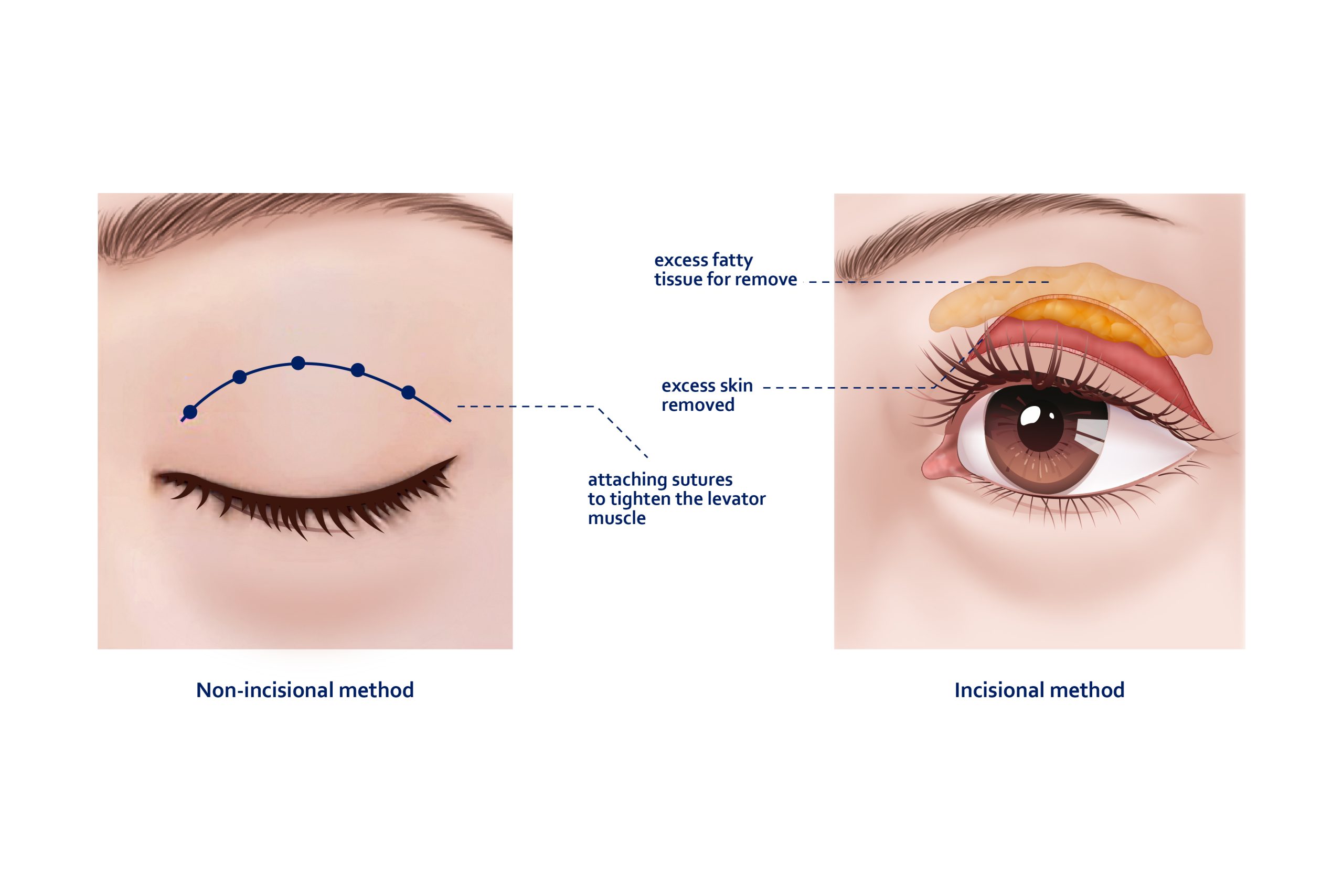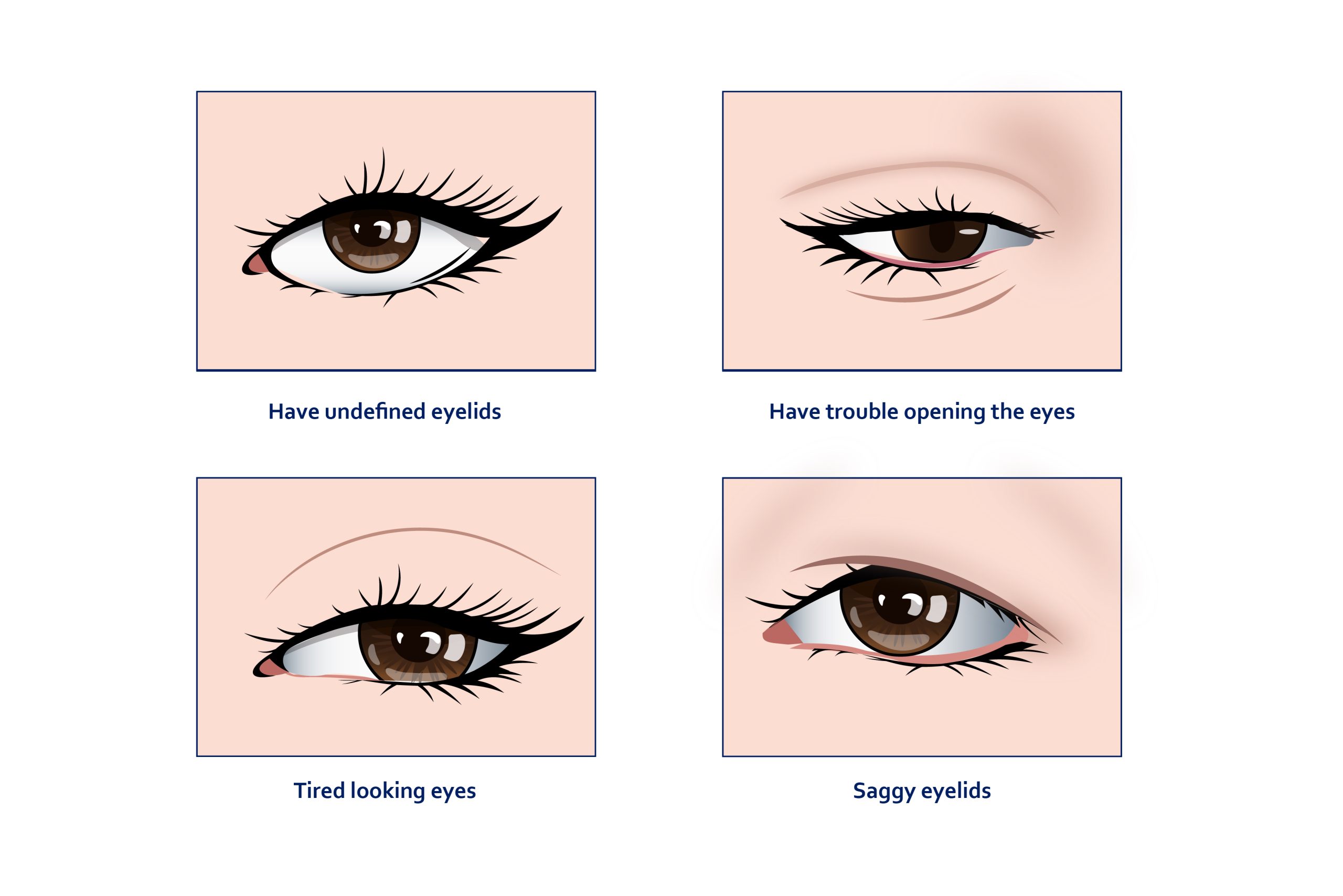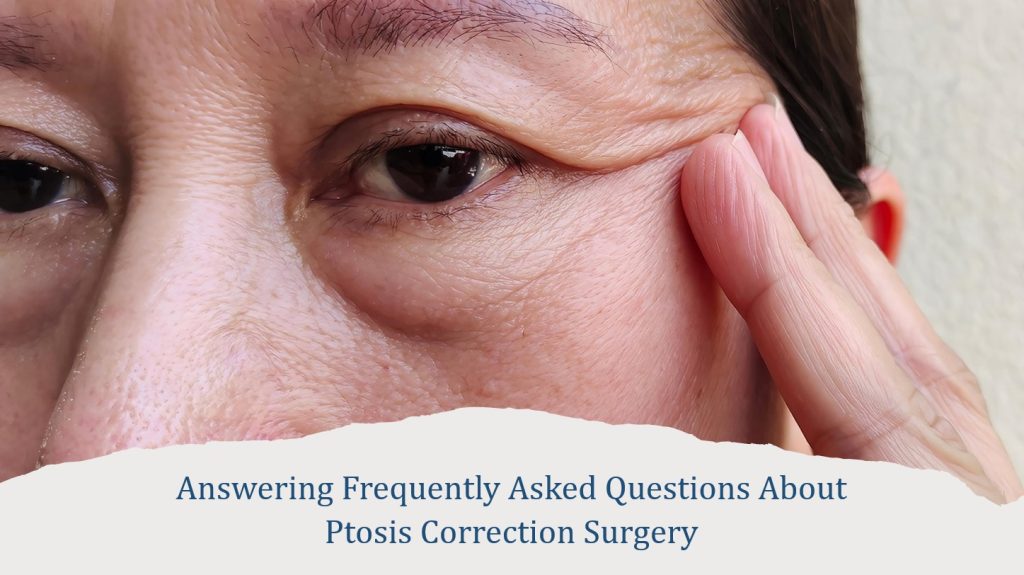Have you ever looked in the mirror and noticed that one of your eyelids seems to droop lower than the other?
If that’s the case, you may be experiencing ptosis, a condition that impacts the muscles responsible for raising your eyelids. While ptosis typically isn’t a cause for concern, some may be bothered by having to tip their head back and lift their chin to see better. Thankfully, there is a solution in the form of ptosis correction surgery, which can help improve this condition. If you’re considering this procedure, you probably have a lot of questions.
For people who are experiencing upper eyelid drooping, it can be fixed with ptosis correction in Singapore performed by a plastic surgeon. However, you may be curious about the process of droopy eyelid surgery in Singapore, including whether you are an ideal candidate for the procedure. Additionally, you may want to know about the recovery time and any potential risks.
This article will provide answers to frequently asked questions about ptosis surgery in Singapore. Let’s get started.
1. What Is Ptosis, And How Is It Corrected With Surgery?

Ptosis, or blepharoptosis, is a medical condition referred to as the drooping of the upper eyelid over the eye, making the eyes look tired and sleepy. Eyelid drooping occurs when the lifting mechanism of the eye is compromised, which causes weakness of the levator muscle in the eyelid. The weakened muscle strength can cause the following:
- Tired looking eyes
- Sleepiness in the eyes
- Functional obstruction of the visual field
- Wrinkles on the forehead
Besides ageing, there are many other factors that may contribute to the drooping of the eyelids. These factors include injury to the eye region, eyelid infections, genetic disposition, prolonged contact lens use, or an underlying medical condition.
Eyelid drooping can be corrected surgically, which involves repairing the structural defect of the eye. Ptosis correction in Singapore is a surgical procedure that can fix this condition by lifting droopy eyelids.
Ptosis correction surgery involves making incisions along the crease of the upper eyelid, and tightening the levator muscle. Sometimes it is also required to remove excess fat and skin. The plastic surgeon then creates a new double eyelid crease and closes the incision with fine sutures. The results in a more lifted eyelid appearance of the eyes.
The procedure can be performed under IV sedation or local anaesthesia.
2. What Are The Most Commonly Used Techniques Of Ptosis Correction in Singapore?

There are mainly two techniques that are widely used for ptosis correction in Singapore. They include:
- Non-Incision Ptosis Correction: This technique involves ptosis correction by making tiny holes in the eyelid and attaching sutures to tighten the levator muscle (no incisions). This method is preferred for patients with mild ptosis.
- Incisional Ptosis Correction: As the name suggests, incisional ptosis correction involves incisions along the double eyelid crease to fix the levator muscle. The excess tissue and skin are excised, creating a new double eyelid crease. This method is ideal for people with moderate to severe ptosis.
2. What Are The Benefits Of Ptosis Correction Surgery?
You will experience a significant improvement in the appearance of your droopy eyelids. The procedure can effectively eliminate or reduce issues related to your visual field, improving your vision by rectifying upper eyelid drooping.
Ptosis surgery in Singapore not only restores the normal anatomical appearance of the eyelids but also enhances the eyelid height, contour, and symmetry.
3. Am I A Good Candidate For Ptosis Correction Surgery?

Having droopy eyelids doesn’t mean you’re unhealthy. Ptosis correction surgery is only required when your vision is wholly or partially blocked due to droopy eyelids.
You’re a good candidate for ptosis correction surgery if:
- You have undefined eyelids
- Are experiencing difficulty opening your eyes
- Your eyes look tired and sleepy due to eyelid drooping
- The skin on your eyelids is sagging
4. What Is The Recovery Time After Ptosis Correction Surgery?
Following your ptosis correction surgery, you will likely experience some bruising and swelling, which should subside within one week to ten days. Postoperative pain is also expected, but it can be managed with oral painkillers. After this period, the majority of patients are able to resume their daily routines.
A follow-up appointment is also scheduled to examine your progress. Your doctor will remove the sutures after one week. During your recovery phase, you will get prescribed eye ointments and drops to lubricate your eyes.
You will notice clearer definement and proper repositioning of the eyelids within 4-12 weeks.
5. Are There Any After-Care Tips That I Should Follow?
Like any other cosmetic surgery procedure, there will be precautionary steps to be taken after undergoing ptosis correction surgery to ensure optimum good recovery. The following are some post-operative tips:
- Avoid excessive exposure to the sun to protect the delicate skin of your eyelid
- Do not rub your eyes after the surgery
- Make sure you complete the course of medications to prevent any infections and complications
- Apply cold compresses the next day after ptosis correction surgery to reduce swelling
- Do not forget to get balanced nutrition and rest to accelerate wound healing and recovery
- Avoid any strenuous activity for a week or two
6. Are There Any Risk Or Complications Associated With Ptosis Correction Surgery?
When performed by a certified plastic surgeon, ptosis surgery, in general, has a high success rate of 95% for treating droopy or asymmetrical eyelids. This procedure comes with little downtime and a lower risk of infection. However, risks and complications may still arise in cases of improper surgical technique or the wrong diagnosis of the ptosis cause.
Some potential risks and complications that come with ptosis correction include the following:
- Injury to eye muscles
- Suture breaking
- Bleeding and infection
- Noticeable scarring
- Excessive tearing
- Eyelid asymmetry
7. What Is The Average Cost Of Ptosis Surgery in Singapore?
The average cost of ptosis correction in Singapore ranges from $7,000 to $16,000 depending on the type of surgery and the severity of your condition. However, the costs may also vary depending on the following factors:
- The surgeon’s fee
- The types of ptosis correction techniques
- Operating facilities’ fee
- Anaesthetist’s fee
- Medications prescribed
Bottom Line
In conclusion, ptosis correction surgery in Singapore can be a life-changing procedure for individuals experiencing drooping eyelids. Although all surgical procedures carry inherent risks and potential complications, ptosis surgery remains a safe and effective option for patients. When performed by an experienced surgeon, the likelihood of adverse outcomes is significantly reduced.
It is important to consult a skilled and experienced surgeon to determine whether ptosis correction surgery is appropriate for your specific needs. With proper care and attention, many patients are able to achieve desired results and improve their quality of life through this procedure.
If you have further questions or concerns about ptosis correction surgery, do not hesitate to speak with a qualified medical professional.







